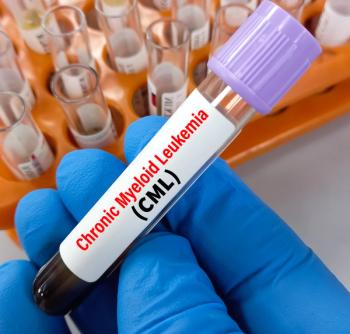
Pharmacy Practice in Focus: Health Systems
- September 2017
- Volume 6
- Issue 5
Hospital Formulary Management
The creation and continuous evaluation of a hospital’s formulary facilitates superior patient care, achieves therapeutic goals, and improves patient safety while curtailing expenses.
Money makes the world go round, right? Perhaps to a degree, but a common misconception about formulary management is that money is the driving force behind the entire operation. Although economic considerations play a role in the decision-making process, we would argue that formulary management is more than medication cost. The creation and continuous evaluation of a hospital’s formulary facilitates superior patient care, achieves therapeutic goals, and improves patient safety while curtailing expenses.
As a basis for this discussion, it must be understood that there are 2 main types of formularies: open and closed. An open formulary places no limits on a clinician’s prescribing abilities. Any brand, generic, class, strength, dosage form, etc., of a medication may be requested, and the pharmacy will stock or obtain the particular therapy. It should be no surprise that this type of formulary system is rarely used because of expense and safety issues. Most institutions implement a closed hospital formulary—a predetermined list of medications that clinicians can prescribe to their patients. In a closed formulary system, usually only 1 or 2 drugs in a given therapeutic class are available to clinicians. Some institutions choose to further restrict prescribing abilities of specific medications to certain physicians or practice specialties (ie, infectious disease or cardiology).1 However, even in a closed system, clinicians may request medications not available on the formulary. These requests should be reserved for medications required to achieve therapeutic goals not attainable with current formulary medications.
The pharmacy and therapeutics (PT) committee is a well-balanced multidisciplinary team composed of physicians, pharmacists, nurses, hospital administrators, quality assurance staff, and other hospital staff. These individuals are key stakeholders who bear the responsibility of formulary management. P&T committees are not about cost and limitation but rather play a vital role in patient care decisions throughout a hospital. One of the committee’s goals is to promote the rational, appropriate, and safe use of drugs while fostering cost-effective therapy. The joint commission standard states, “The hospital develops and approves criteria for selecting medications, which, at a minimum, include the following: indications for use, effectiveness, drug interaction, potential for errors and abuse, adverse drug events, sentinel event advisories, population(s) served (eg, pediatrics, geriatrics), other risks, costs.”2 The assessment of formulary medications does not stop upon a medication’s addition to the formulary, but the P&T committee maintains effective formulary management through reviewing new data regarding safety and evaluating medication use.
Formulary medications can provide patients with an equipotent alternative to their home medication through approved therapeutic interchanges. Often only 1 or 2 medications in a given class will be considered formulary, and there should be guidance regarding conversion of other medications in that class to the formulary medication. The conversion of a patient’s home medications to the hospital formulary medications, and then the interchange back to the community-outpatient-setting medications, should be undertaken with the utmost care. From the point of initial triage in the emergency department to the discharge of a patient back into the community setting, efficient and effective medication reconciliation is a crucial patient care process. Clinicians should review each step carefully; the importance of safe interchange of these medications is critical.
Antibiotic use represents another essential component of any formulary system. This group of medications affects cost and patient outcomes in health care. In the United States, more than 50% of patients in an inpatient setting receive some type of antimicrobial therapy, and 20% to 50% of the antibiotics prescribed have been found to be “unnecessary” or “inappropriate.”3,4 The need to ameliorate antibiotic use in hospitals is not only an individual patient care issue but also an escalating public health matter.4 Antibiotic resistance is on the rise; therefore, implementation of antibiotic stewardship programs is essential in hospitals. Antibiotic stewardship can start with an effective hospital formulary. “Formulary restriction is also a first step toward stewardship because, very simply, making only certain drugs available is a way to steer clinicians toward the use of those drugs,” according to the CDC.4 Clinicians must streamline and manage antibiotic use to improve patient outcomes and reduce health care costs. Effective formulary management and strategic restrictions of medication use are an initial step in the right direction toward improving antibiotic stewardship.
We believe that involving key stakeholders via a P&T committee to create a closed formulary system creates an environment that improves patient care. Safe and appropriate home medication therapeutic interchange and antibiotic stewardship are important in providing superior patient care. Medication cost is one factor in determining whether a medication is formulary, but that factor should be superseded by the impact it has on patient care. The effective implementation of a formulary system can improve the use of health care resources for a pharmacy and a facility and can improve patient outcomes.
Jerry Barbee Jr, PharmD, BCPS, CPh, is a clinical pharmacist at HCA West Florida Hospital.
Katy Lauderdale, PharmD, BCPS, is a clinical pharmacist at HCA West Florida Hospital.
Alexis Smith is a 2018 PharmD candidate at the University of Maryland Eastern Shore.
References
- Chase KA, Brown TR, Holdford DA. Medication management. In: Introduction to hospital and health-system pharmacy practice. Bethesda, MD: American Society of Health-System Pharmacists; 2010.
- Joint Commission Perspectives. January 2012.
- Trends in US antibiotic use: new data needed to improve prescribing, combat threat of antibiotic resistance. Pew Charitable Trusts website. pewtrusts.org/en/research-and-analysis/issue-briefs/2017/03/trends-in-us-antibiotic-use. Published March 22, 2017. Accessed June 2, 2017.
- Core elements of hospital antibiotic stewardship programs. CDC website. cdc.gov/getsmart/healthcare/implementation/core-elements.html. Published February 23, 2017. Accessed June 2, 2017.
Articles in this issue
about 8 years ago
Postoperative Pain Managementabout 8 years ago
Fixed-Ratio Combination of Basal Insulin and GLP-1 Receptor Agonistabout 8 years ago
Biosimilars and Follow-on Biologicsabout 8 years ago
Biosimilars: A Similar Frontierabout 8 years ago
Cancer and Pain: Opportunities to Optimize Patient CareNewsletter
Stay informed on drug updates, treatment guidelines, and pharmacy practice trends—subscribe to Pharmacy Times for weekly clinical insights.






















































































































































































































